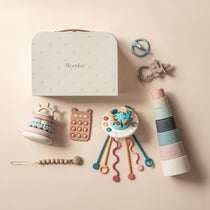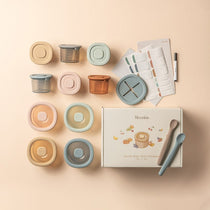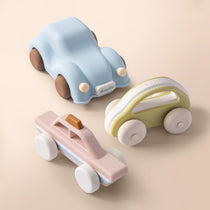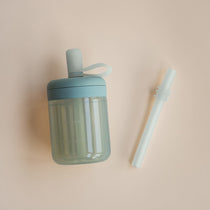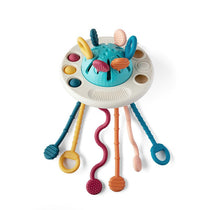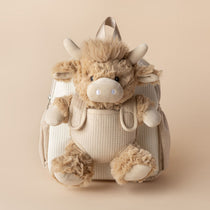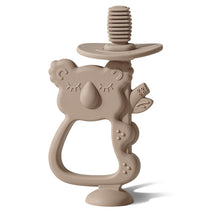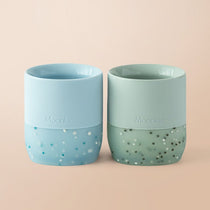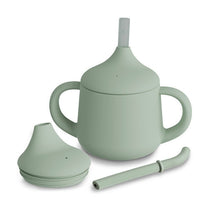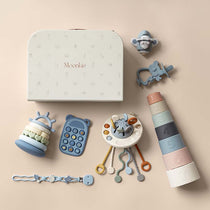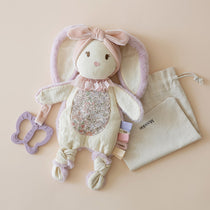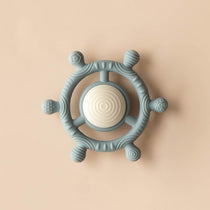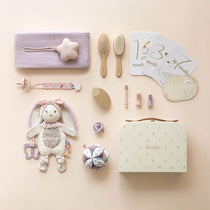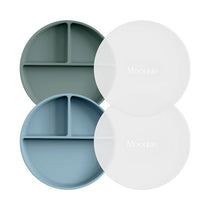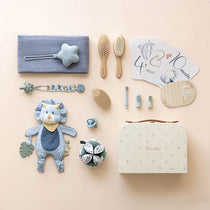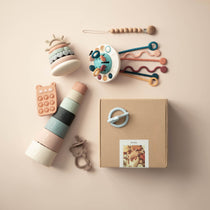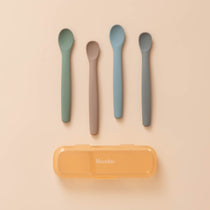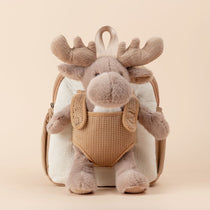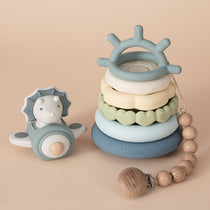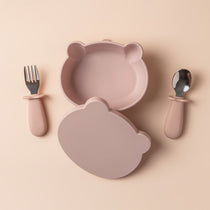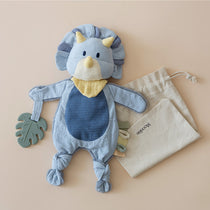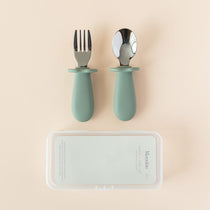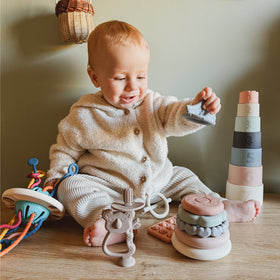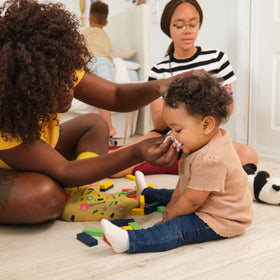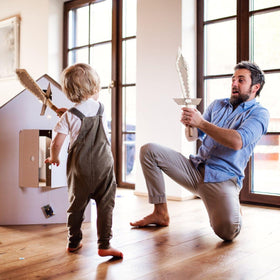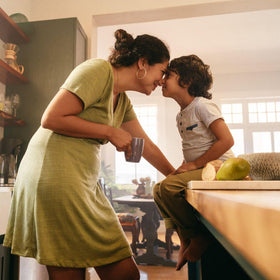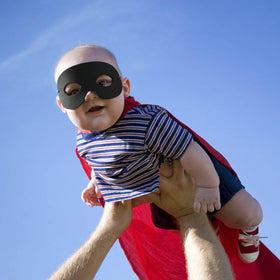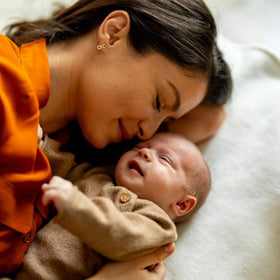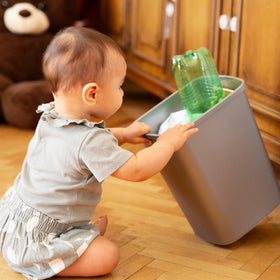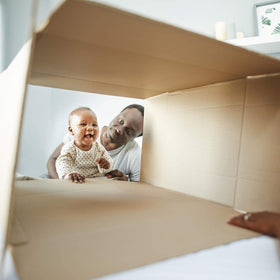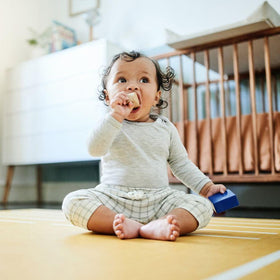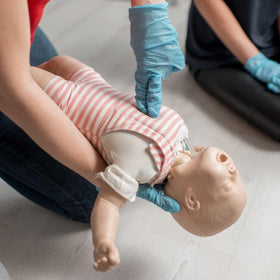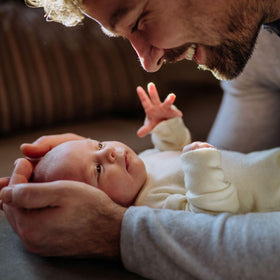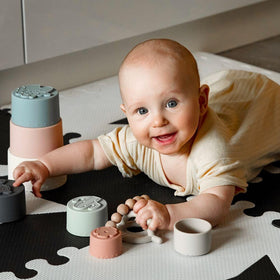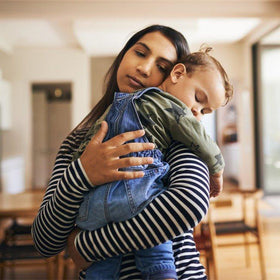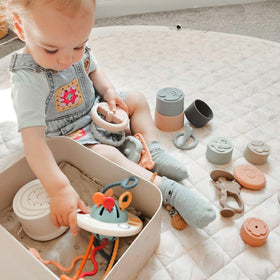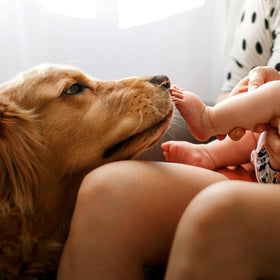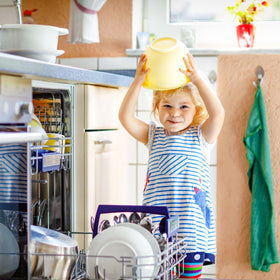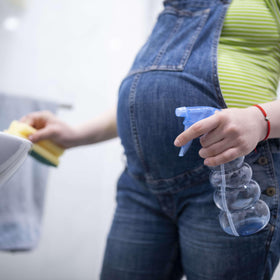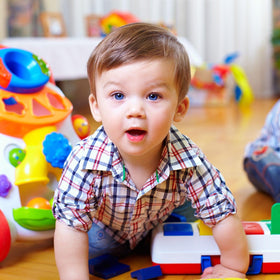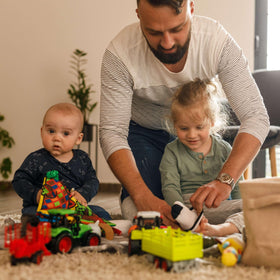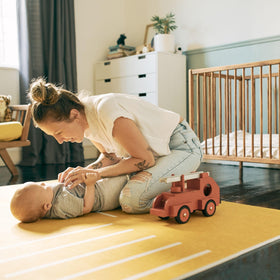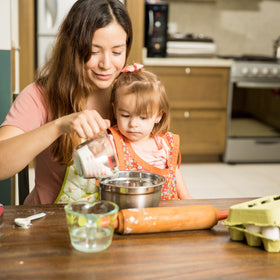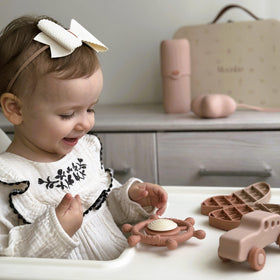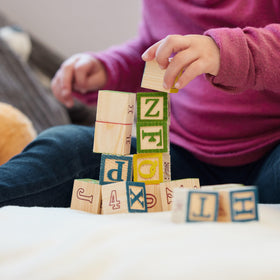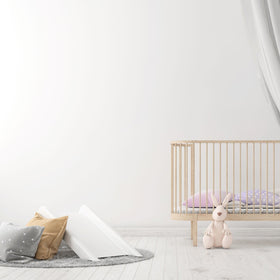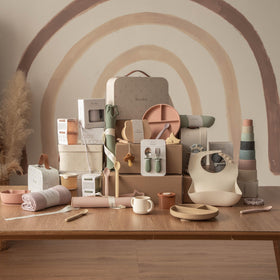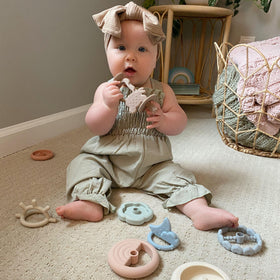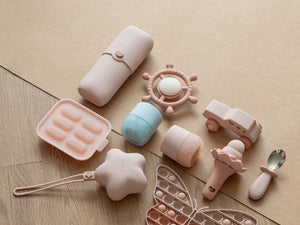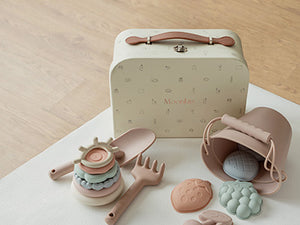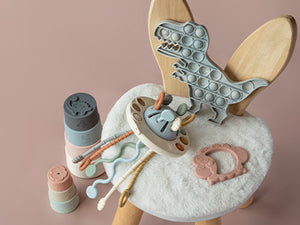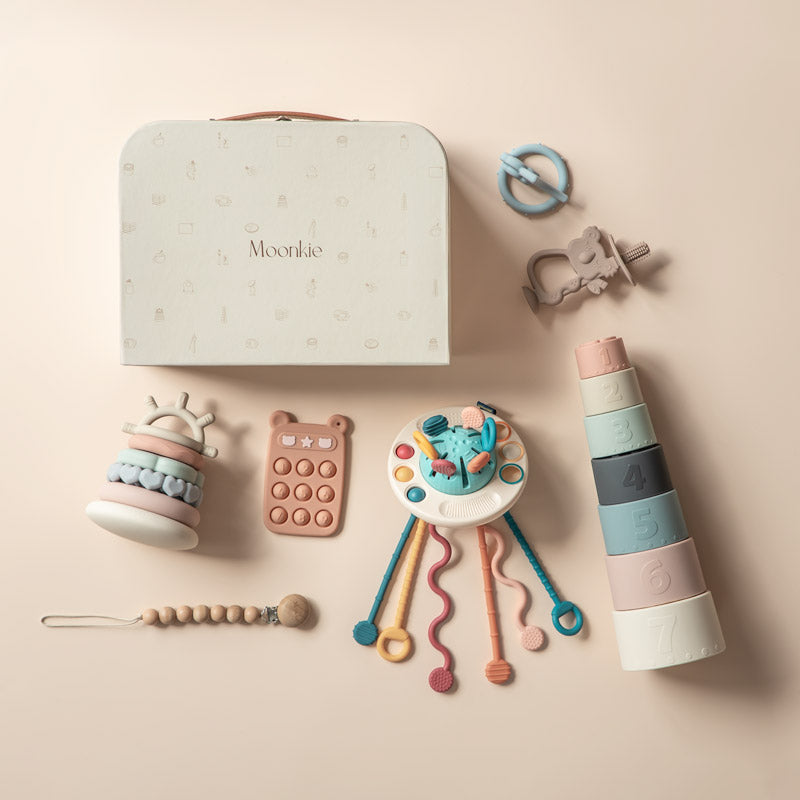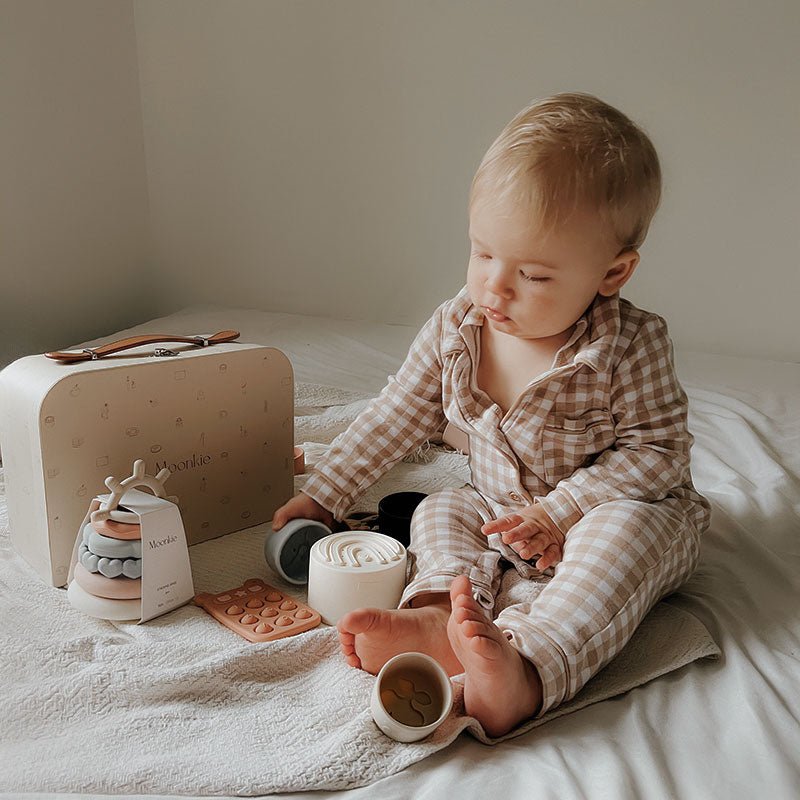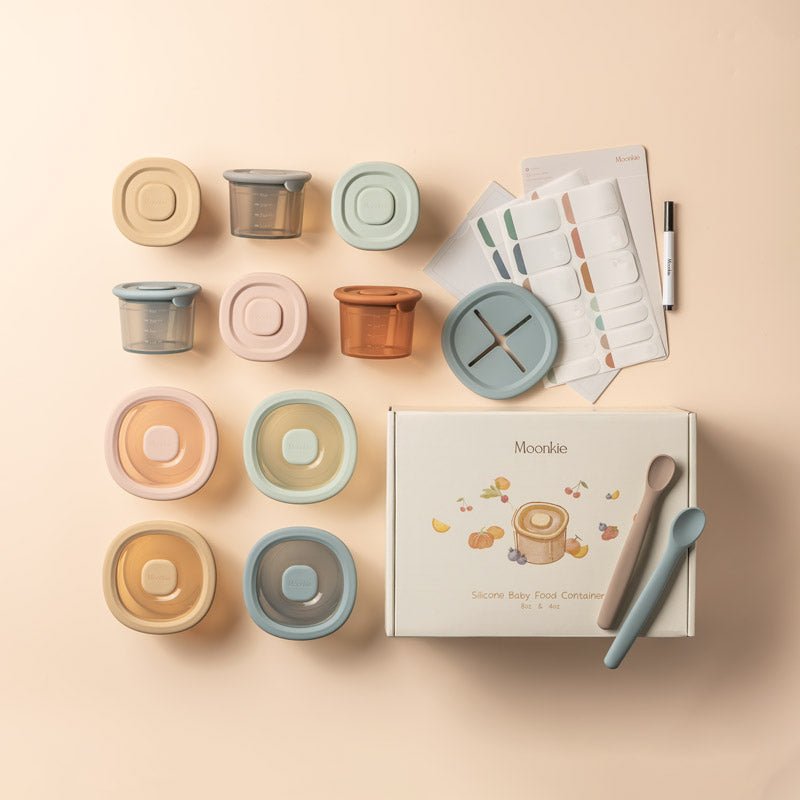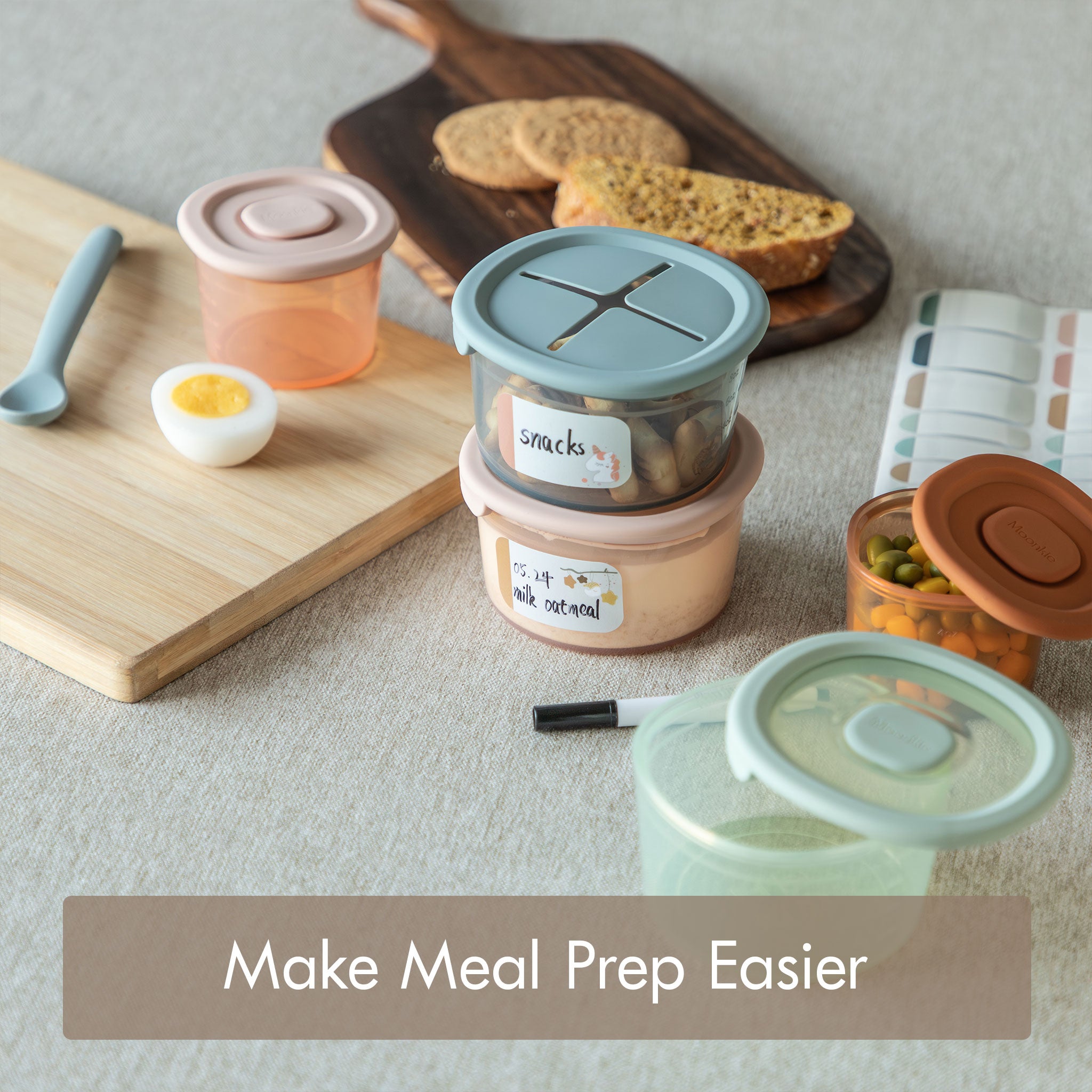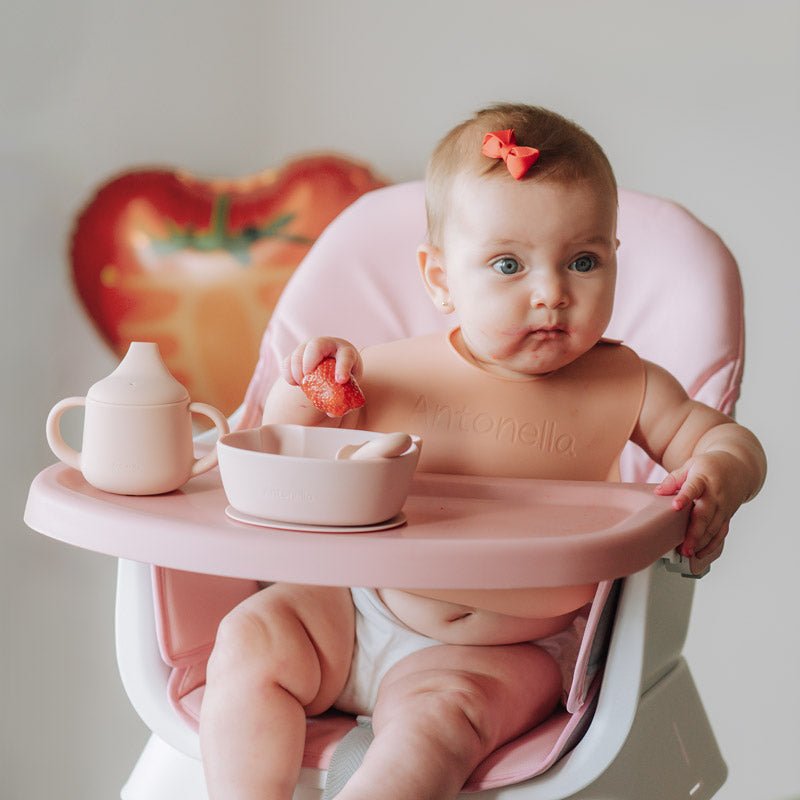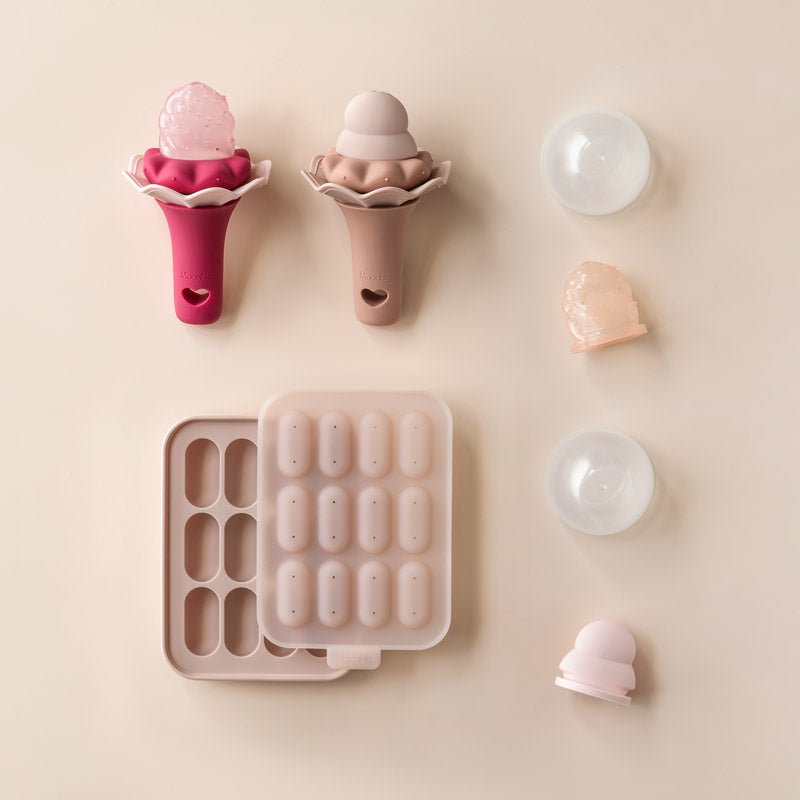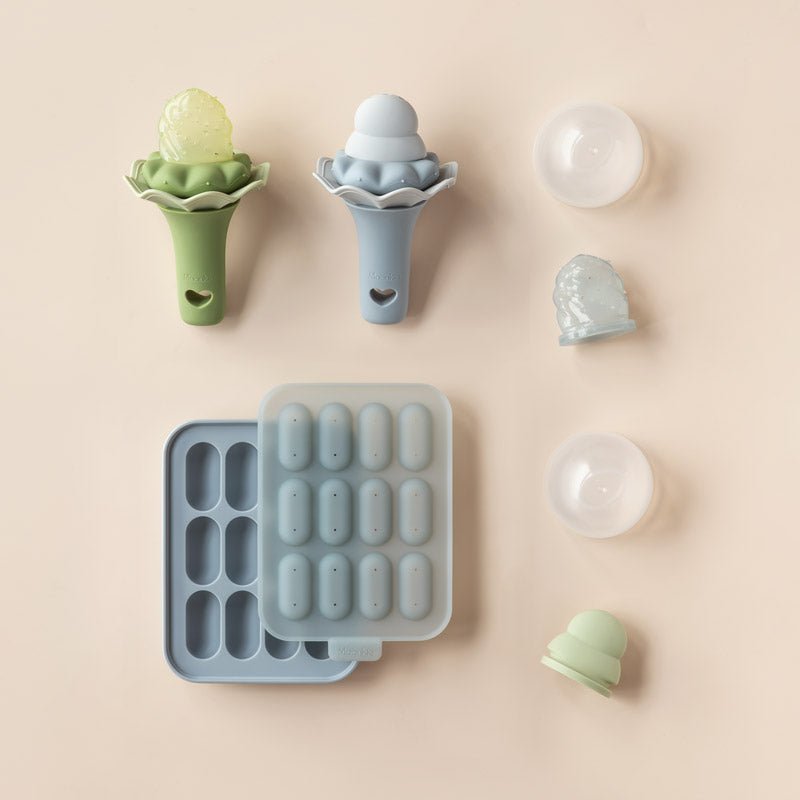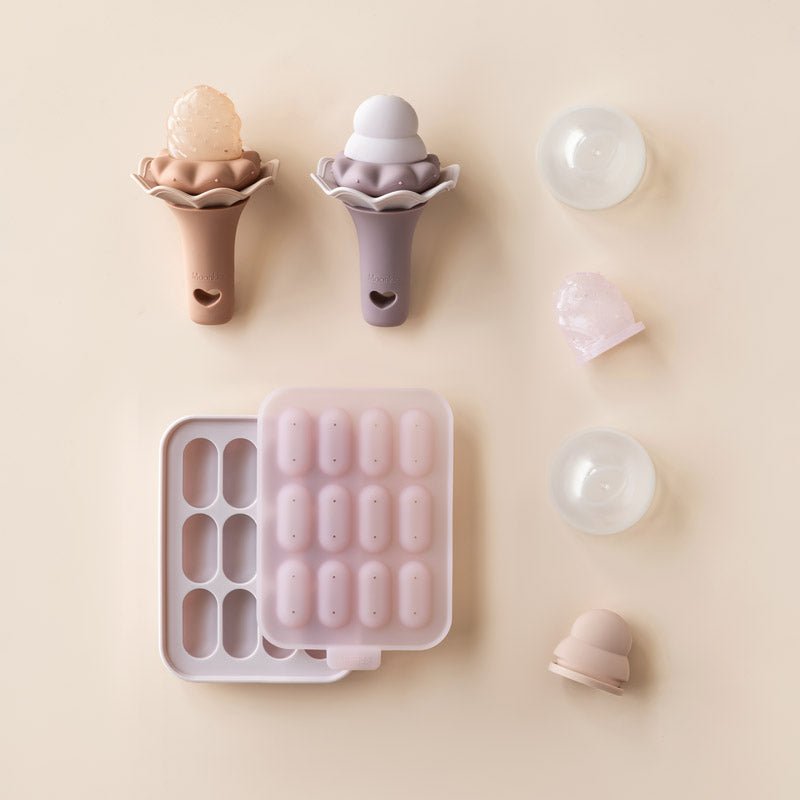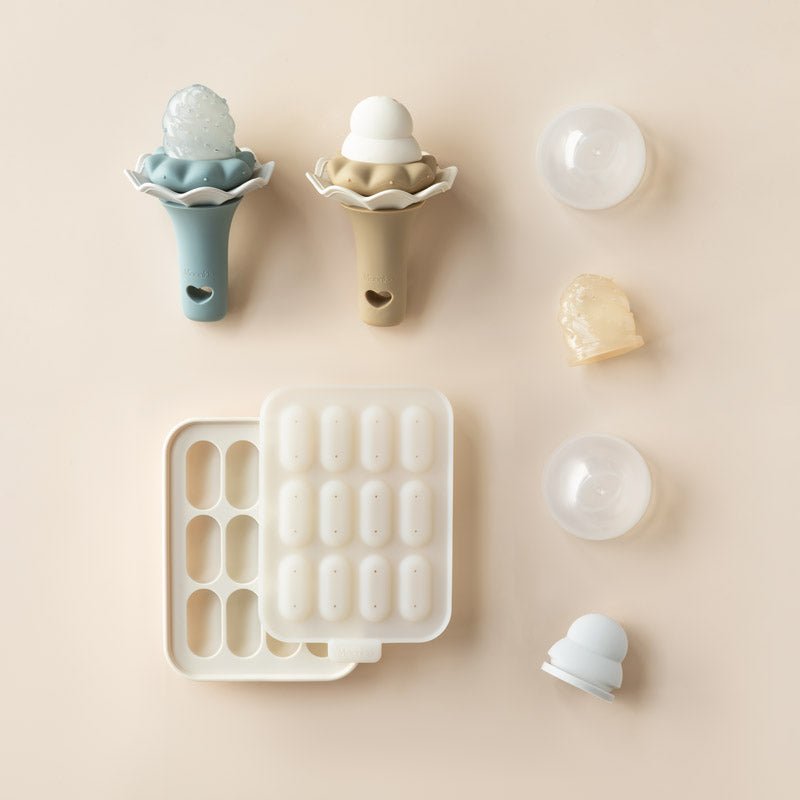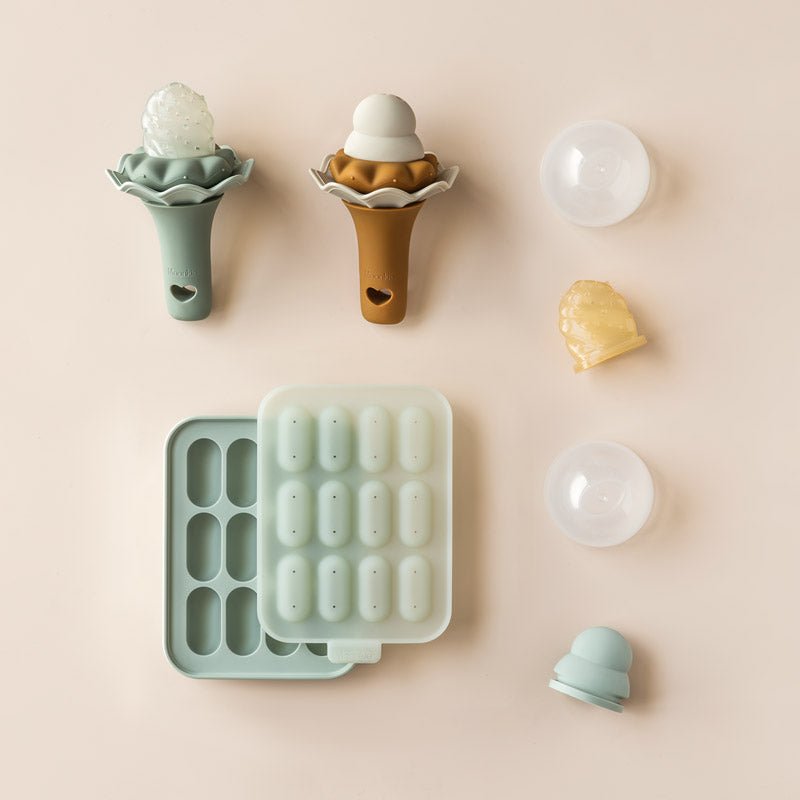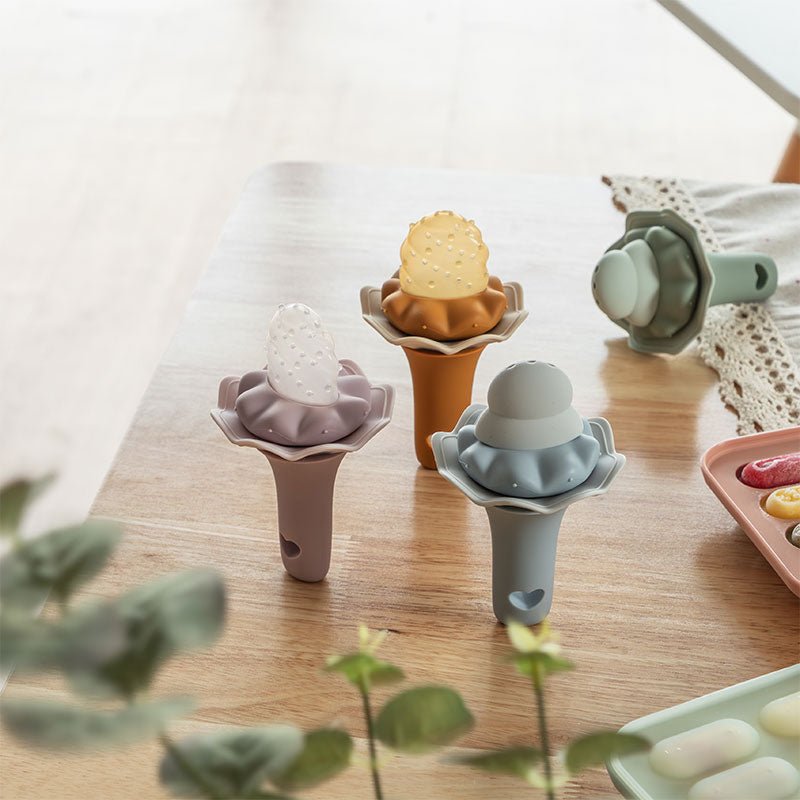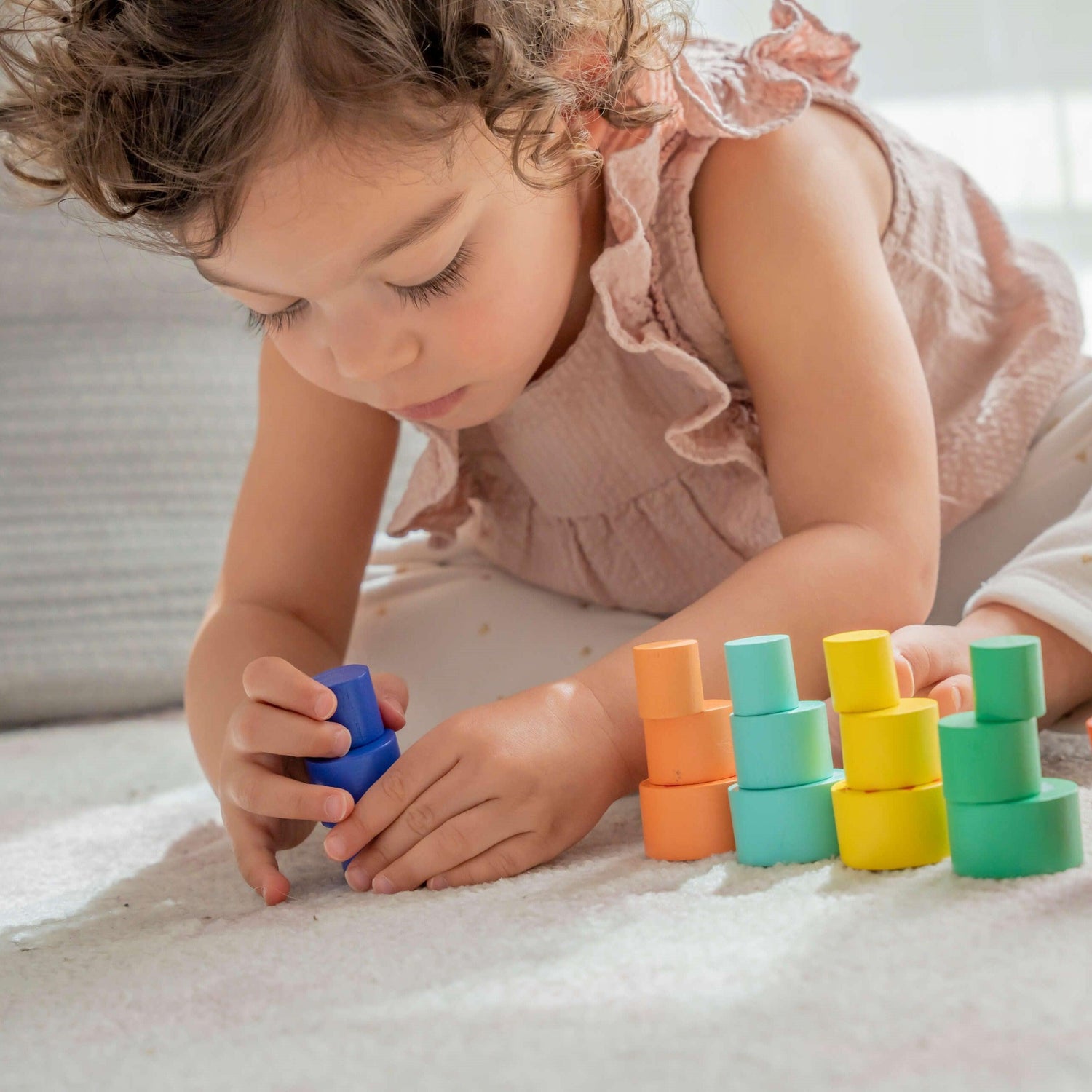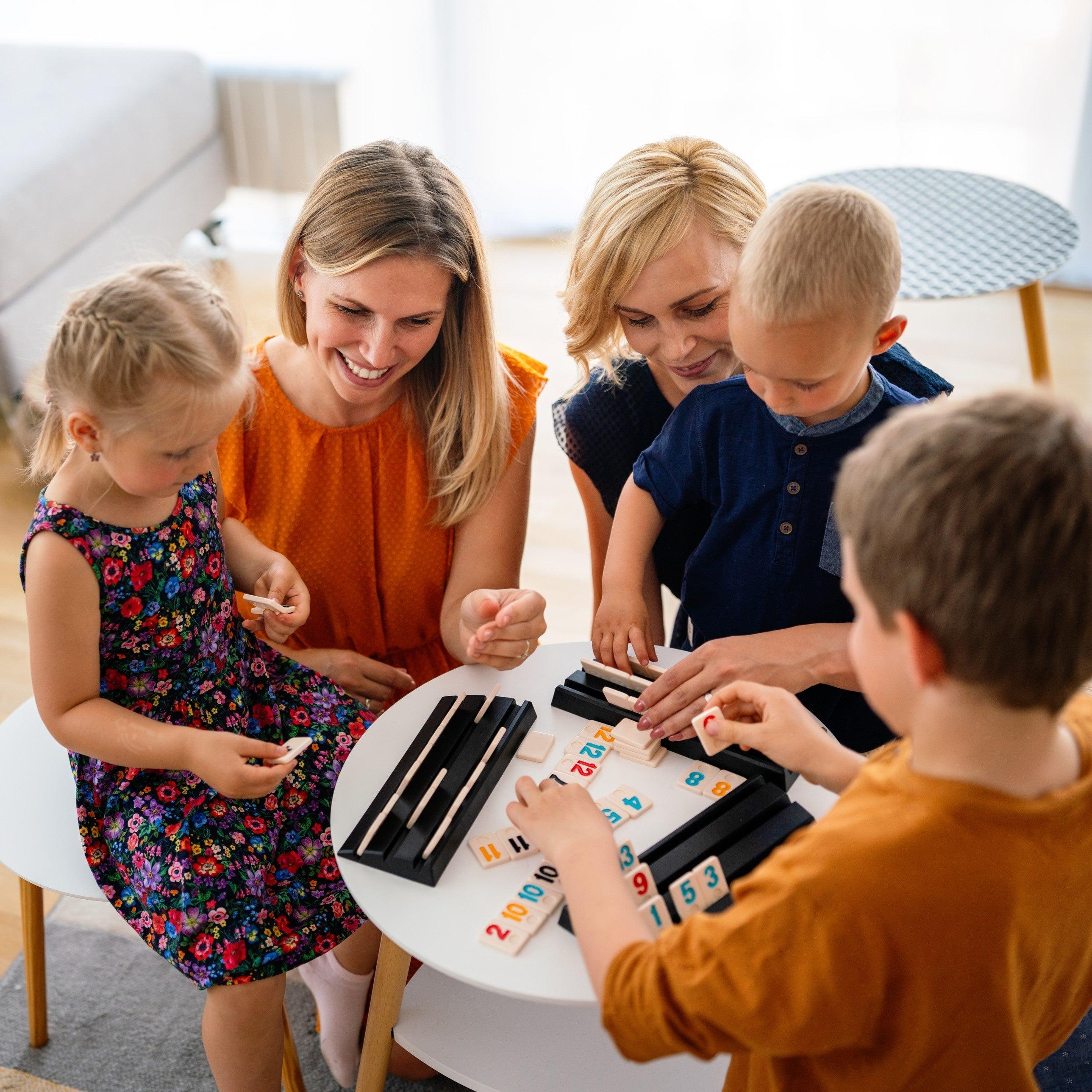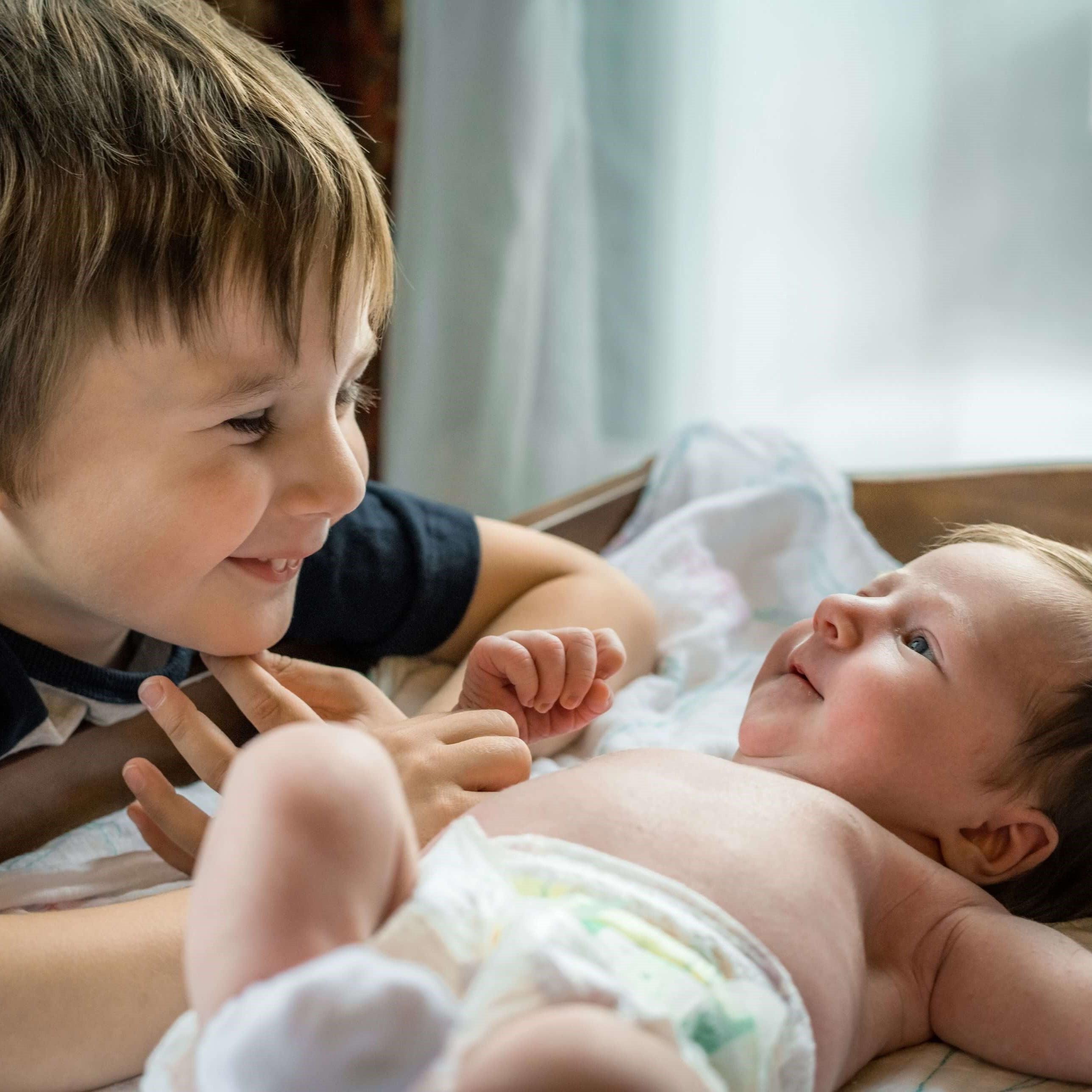Stacking and building games are simple yet powerful for your little one's development. But why? And what stacking and building games are there beyond blocks, Lincoln logs, and couch cushions?
Stacking and building games help toddlers figure out how things work together. They learn about size, shape, texture, balance, wobbling, and more from these games while building their problem-solving, hand-eye coordination, and fine motor skills.
In those first 12 months, your baby learns a lot about individual things. But that second 12 months is when making connections between objects really takes off. This article will focus on stacking and building for one, two, and three-year-olds.
Why Do Young Kids Need to Stack and Build?
Stacking and building helps little ones consolidate the object observations they made in their first year. They compare objects side-by-side, smash things together, stack precariously, and combine things in play that make you scratch your head a bit.
One to three-year-olds still need to explore and discover tangibly--everything must be hands-on. This is why your toddler starts to sort things by size or fixate on putting small objects into larger things, even if those little objects will be difficult to get out later.
There's even more going on in your child's brain and development as they stack and build:
spatial reasoning
problem-solving
hand-eye coordination
fine motor development
learning to describe objects in relation to one another (source)
These only scratch the surface!
We have an article here that goes more in-depth about how stacking toys help your baby develop a foundation for toddler observations: 5 Ways Stacking Toys Benefit Your Baby.
Let's get into some major steps your toddler takes when stacking and building:
Creating Something New
Taking several objects and putting them together creates a new object with unique characteristics (source). It's a new thing to explore and learn from.
For instance, a toddler will learn that blocks are hard and sturdy on their own, but when stacked, they make something easy to destroy. That toddler will also learn through repeated experiments that curved blocks or triangles make building more difficult and are better for the top of a building.
Cups and boxes hold other objects, but when turned upside down, one can stack things on them to make something new.
Construction Gives New Information About Objects
Building and destroying constructed creations provides another perspective on the properties of the individual objects and which objects they work best with (source). For example, a toddler could learn that more surface area on a block face is more stackable than a thin face.
A toddler can also learn that Legos work best with Legos, and wooden puzzle pieces work best together. It certainly takes time and lots of experimentation before a little one decides that some objects are more fun and useful when paired with similar objects, but that lesson is learned in the toddler years.
Should I Correct My Toddler's Stacking or Demonstrate How to Build Better?
Though correcting your toddler's stacking or demonstrating how to build something better is tempting, it is best to let your little one figure it out. These tangible learning experiences will only sink in through repeated practice, not instruction.
Now, if your little one gets super frustrated and asks for your help, that's different. You responding positively when your toddler asks for help nicely is something your toddler needs for reassurance.
But if you notice that your toddler asks you every time she wants something built, consider saying no and encouraging your little one to build it herself. Offer some hints if she's willing to listen after a failed attempt.
Generally speaking, toddlers prefer to do things independently, so building things—however imperfectly—tends to come naturally to them.
Should I Be Worried If My Toddler Has No Interest in Stacking and Building?
If your toddler is older than 18 months and refuses to stack blocks or build things, you should talk to your pediatrician. It could simply be a lack of interest, but it could also be a problem with spatial reasoning, hand-eye coordination, or vision.
Your pediatrician will likely do a few block or line-objects-up tests to identify any potential issues and refer you to a specialist.
However, some toddlers would simply rather destroy whatever someone else builds instead of taking the time to make something themselves. If your little one is a 0 to 100 miles-per-hour kind of kid, that's more than likely what's going on.
In such cases, you can encourage stacking and building by arranging some games and activities together. Lucky for you, we've got a nifty idea list!
10 Stacking and Building Games You Can Play with Your Young Kids
Stacking and building games are fun, simple, and playable for a few minutes to a few hours. Your little one can play these with you (their favorite person right now), other siblings, or friends for extra interest and language practice.

Your toddler can also play these independently, but they are far more fun with others around!
1. Block Castles
Block castles are a classic game. Once your toddler understands stacking blocks, you can show him how to build houses, towers, castles, or even a whole village!
To evoke more imaginative play, involve cars, little figurines, stuffed animals, and anything else you see in your child's toy chest. You may hear your tiny tike come up with extravagantly complicated storylines, but that's perfect for development and fun!
2. Marble Runs or Tracks
Marble runs, or tracks, are an ingenious stacking toy for three-year-olds and up because they involve far more precise movements and planning than other toddler stacking toys (not to mention the small marbles).
Grown-ups like playing with these, too! You can incorporate other items around the house or stick with the original set.
Check out other Montessori-inspired stacking toys in 10 Montessori Stacking Toys for Toddlers.
3. Obstacle Courses
When parents think of the awesomeness of obstacle courses, they typically think of older kids, teenagers, and adults young at heart. But toddlers love them, too! Obstacle courses can be as simple or difficult as you want to make them, and they provide tons of entertainment.
Set up obstacles that you know your little one can handle, and ensure that any mishaps won't involve high falls or sharp corners. You can use couch cushions, tables, bean bags, beds, climbing cubes, pillows, and anything else you've got around the house.
If you have multiple kids, try making the course a relay race or a competition. It's an excellent way to wear your littles out on a rainy day inside or a fun excuse to be outside on a sunny day.
4. Fort
Who doesn't like building a fort? Build a fort with furniture, cushions, pillows, blankets, boxes, and anything else you can find. I've been known to make fort mazes spanning two or three rooms in our home (and scored cool mom points doing it!).
Building a fort with your toddler can also introduce concepts like supporting a roof, bracing walls, and trying not to knock things down. You can also show your little one lots of different structures and plans.
Once you have a fort, you can use it for games like Capture the Flag, Hide and Seek, Marco Polo, reading time, or a flashlight game. Forts are a fun and memorable way to play!
5. Cake Building
How about a tasty building game? Cake decorating may not be your thing, but your toddler will not care how beautiful or messy it turns out. Take one cake box or recipe and pour it into various little pans, or bake it in one and cut out various brick sizes.

Freeze your cake pieces while you whip up some frosting, grab a few toothpicks, and prepare a space. Once everything is ready, let your toddler start building!
Cake building is tasty, but it also gives your wee one experience with building blocks much softer and more delicate than toys. It's a delicious game that you can do with Jello cubes, banana bread slices, or any other type of stackable food.
6. Stick and Dirt Race Tracks
Now, let's get outside! Toddlers typically love playing in the dirt, so showing them how to use sticks and dirt to make race tracks is a fun building game. Your little one can build ramps, levies, and trenches for cars to pass over.
If you have a lot of leaves, you can create a toddler race track by raking a path through them. But I will warn you that your toddler will be stuck running that track for a long time; leaf tracks wore my littles out every year before school!
After rain, you can use mud to show your toddler how to build a dam and water channels. When complete, pour a bucket of water into the channel or break the dam so your little one can see their work pay off.
7. Rock House Restaurant
Does your toddler like to play chef? Let's take that imagination outside and build a rock house restaurant! You can build a fire-pit kitchen together, a table and seating area, and maybe even some walls.
Of course, this can be as big or small as the rocks you have available. My littles loved setting up lots of "tables" and rushing around to keep up with all the orders. I even gave them a tray to carry their make-believe orders on.
Believe it or not, your little one's imagination will make even the tiniest stack of rocks into a five-star restaurant!
8. Sand Castle Kings
Yet another childhood classic, building sand castles is a mesmerizing game for toddlers! Sand is challenging because one must use tools, practice packing tightly, and be gentle. So many observations to be made and skills to learn in making sand castles!

If you are not anywhere close to a beach, you can still provide this experience to your little one by building a bag or two of play sand from your local hardware store. Pour it into a giant bin or kiddie pool outside, and find a way to cover it at night to avoid offering a neighborhood litter box.
Once your toddler has gotten sand castles down, try building a village, or make a catapult to sling sand at one another's castles. It's open-ended play, so follow your toddler's lead!
9. Boat Floats
Once your toddler has mastered building and stacking, you can introduce more complicated builds that demonstrate how objects act in water. This is a fun activity for toddlers, but they will definitely devolve into playing with water most of the time. But you can engage your child's brilliant mind with some experiments.
One imaginative way to do this is to let your toddler test various materials in a bin of water, select some based on observation, and use them to build boats. Your little one can glue sails or decorations on the blocks that pass his test or go even further by gluing several buoyant blocks together to make a ship.
When your toddler is ready, test his creations in a bathtub, kiddie pool, or water bin and ask him to explain what he sees. If the design doesn't work, encourage him to solve the problem. Which way does the boat tip first? Is it too heavy on that side?
Some toddlers are ready for an activity like this after they turn three, but some need to wait until preschool. One of mine built boats at three, and the other waited until four before it made sense. It never hurts to try it out!
10. Bridge Building
Bridge building is a concept two-year-olds grasp as they build more complicated towers and building structures with blocks. But, you can make this even more applicable by building a bridge over something small outside.
Whether you make a low bridge to balance on in an obstacle course or to cross a little creek, involving your toddler in building little bridges is a fun learning opportunity that exhibits new concepts in weight distribution, balance, and structural strength.
In a Nutshell
Building and stacking games are incredibly useful for teaching your little one real-world concepts, like gravity and basic structure mechanics. But they are also essential to your little one's cognitive, physical, and social development. What a fun way to learn and grow!

